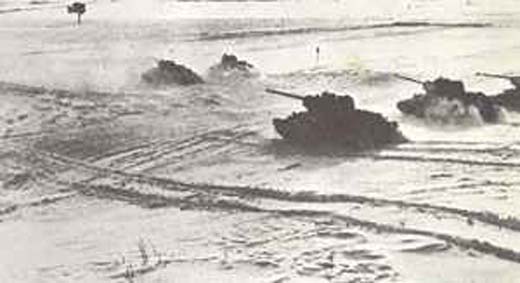Air Operations, East Indies
During the morning, 17th Provisional Pursuit Squadron P-40s down 4 G3M 'Nell' bombers, 1 A6M 'Zero' and 1 B5N 'Kate' bomber over Java.
[Air Operations, Pacific
Japanese positions in Rabaul are attacke by US bombers from Australia.
[Battle of the Atlantic
- The British submarine Trident torpedoes the Prinz Eugen off Trondheim.
- U-504 sinks the American tanker W. D. Anderson (10,227t) 12 miles north of Jupiter Light, Florida with the loss of 35 of her crew. 1 survivor is picked up by a small fishing boat and transferred to the American coast guard vessel Trouper.
- U-161 damages the American steamer Lihue (7001t) 275 miles west of Martinique. She diverts to St Lucia, but sinks in tow on the 26th.
- U-502 sinks the Panamanian tanker Thalia (8329t) 80 miles from Aruba with the loss of 1 crewman. There are 40 survivors.
- U-129 sinks the Canadian steamer Lennox (1904t) northeast of Barima, Venezuela with the loss of 2 of her crew. 18 survivors are picked up by the British tanker Athelrill.
Bismarck Archipelago
6 American B-17 bombers take off from an Australian base and bomb Rabaul, New Britain, for the first time. It is the first Allied raid on the newly-established Japanese base.
[Brazil, Home Front
Stefan Zweig exiled Austrian author and his wife commit suicide at Petropolis. He was 60.
[Burma
The only accessible bridge over the Sittang is blown up by Indian troops, leaving a large part of the 17th Indian Div cut off on the east bank. Most of the men manage to escape but all heavy equipment is lost.
[Diplomatic Relations
A Mutual Aid Agreement is reached between Britain, the United States, Australia and New Zealand.
[Dutch East Indies
A Japanese war communiqué announces that the island of Amboina is now entirely in Japanese hands. The Allies headquarters staff evacuates Java, already in severe danger, for Australia.
[Eastern Front
Dorogobuzh, east of Smolensk, is recaptured by the Russians. The Russians reach the Dniepr River in strength.
Assault of Russian T-34 Tanks |
 |
Germany, Home Front
Professor August von Parseval dies at age 81. He was an aeronautical engineer and inventor of the Parseval 'kite balloon' used on the Western Front during World War I.
[Mediterranean
The British submarine P-38 is sunk by the Italian destroyers Pigafetta, Pessagno and the torpedo boat Circe north of Misrata, Libya with the loss of 32 of her crew.
[North Africa
Gen Auchinleck issues new directives on the conduct of operations: in the event of a new Axis offensive British troops should in general not try to counterattack but should confine themselves to holding up the enemy advance as long as possible.
[Philippines
(2/22?)Roosevelt orders MacArthur to leave Bataan for Australia. Gen Wainwright takes command in the Philippines. MacArthur is appointed Commander-in-Chief of the Allied Forces in Australia.
[Soviet Union, Home Front
Stalin says that the war against Germany has turned in favor of the Soviet Union: 'Now the Germans no longer possess the military advantage which they had in the first months of the war by virtue of their treacherous and sudden attack. The momentum of unexpectedness and suddeness which constituted the reserve strength of the German fascist troops has been fully spent.'
[United States, Home Front
The Japanese submarine I-17 shells the Elwood oil installations west of Santa Barbara. About 25 shells are fired by the craft most of which explode close but harmlessly among the derricks and storage facilities. One rig was hit causing about $500 in damages. There are no casualties.
A history of the Richfield Oil Corporation, From the Rio Grande to the Arctic by Charles S. Jones, says the shelling was an act of revenge by the submarine's captain, Kizo Nishino. In the late 1930s, Nishino commanded a Japanese tanker which picked up a cargo of crude oil at Elwood. He and the crew were received by company and local governmnet officials in a formal ceremony. Capt Nishino slipped while climbing a path from the beach and fell into a cluster of cactus. The American party was as embarrassed as the Japanese captain, but a group of workers at a rig nearby could not contain their laughter as cactus spines were being removed from Capt Nishino's backside. The uproarious behavior irritated the captain, and he vowed never to forget the incident. He returned with his submarine in 1942 to remind the Americans of it.
[